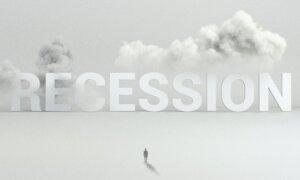Smart people know to avoid fallacies.
One of them is known as the fallacy of post hoc ergo propter hoc. It’s Latin for “after this, therefore because of this.”
The classic example concerns the rooster and the sunrise. Every morning before the sun comes up, the rooster does his crazy crowing routine, waking up everyone around. Shortly after, the light begins to appear on the horizon. If you knew nothing else, and you watched this happen over and over, you might conclude that the rooster is causing the sun to rise.
Of course, this is testable. You could kill the rooster and see what happens. The sun still comes up. But wait just a moment. Just the fact that this one rooster is dead doesn’t mean that all roosters are gone. Some rooster somewhere is crowing and causing the sun to rise. So your little experiment doesn’t disprove the theory.
What a conundrum, right? If someone is convinced that a bird is controlling the sun, there is probably no way to convince him otherwise.
We can laugh at this example. How can someone be so dumb? Actually, this basic fallacy affects all science in all times, all places, and all subjects. The presumption that a regular pattern showing something happens and then something else happens with regularity implies causation is baked into human thinking. Now and always.
It’s a fallacy, meaning that it is not necessarily true. It could be true, however, subject to serious investigation. And therein lies the real problem. We need to figure out what causes what. But discerning causal agents from accidental ones is the biggest issue in all thinking.
The need to know is baked into what it means to be a rational creature. We just cannot help ourselves. That’s why this fallacy persists everywhere.
There is also the famous case of malaria. It was once believed that infections were worse at nightfall, so the theory was that it was caused by cold air at night. Not crazy, right? Except that the real reason was that the mosquitoes came out in the evenings. They were the real culprit. But a bad theory based on fallacy prevented many people from seeing it.
My goodness, we were overwhelmed by this during the COVID-19 experience. The fake science was overwhelming. Day after day, we saw loads of fake science of this sort being dumped on the world. Look, California’s cases are down and California bans gatherings, therefore coercive measures are controlling virus spread!
Not so fast. These factors could be completely unrelated. We might not even have good data on infections at all. Those are subject to testing (accurate or not) and might be completely wrong on a population level. Even if the data were correct, the low infections could be caused by weather, prior immunity, or something else that we have not considered.
Early on, I can recall looking at these amazing real-time charts of infections and deaths and believing that I had a window into reality. Several times, I even posted things along the lines of “See, Arizona has achieved herd immunity,” without understanding that the data were wildly inaccurate and subject to testing, reporting, and a host of other factors. Even the data were suspect: Misclassification was rampant.
And here too, the fallacy of post hoc ergo propter hoc bit everyone extremely hard. But most of us went along with it.
So crazy did it all become that people including bureaucrats at the Centers for Disease Control and Prevention started inventing nutty theories such as that masking protects against virus spread, which science had long proven to be untrue. It became even crazier: You can sit without a mask but walking and standing causes viruses to spread, so that’s when you have to wear a mask!
Absolutely nuts!
It was the same after vaccination. Countless famous people took to social media to announce they had COVID-19 but it was a mild case thanks to the vaccine. There is simply no way they could know that. They knew for sure that they had the vaccine and they knew for sure that their case of COVID-19 was mild. But believing that one caused the other was simply a matter of faith. It might have been mild regardless. It might have been milder. As time went on, we encountered many studies showing that more vaccination was associated with more infection. Did one cause the other? It’s hard to say.
And yet vast numbers of vaccine studies in the past several years have been affected by this problem. Particularly vexing is the problem of the “healthy user bias,” which is that people who were vaccinated tend to be more compliant and conscientious in other ways too, which meant that initially, it seemed like they had better health outcomes from COVID-19 vaccination, but the results were actually attributable to this bias.
This was revealed in later studies. But the problem of discerning cause and effect from random noise still persists.
The field of medicine has long dealt with this problem. We are mortified that the practice of bleeding patients persisted for centuries even up to the 19th century. How could they have been so stupid? Well, they had a theory that disease was caused by bad humors in the blood so it needed to be drained. Then they observed that the patient got better.
Well, the patient might have gotten better anyway and even faster without bleeding. But it took many centuries to finally realize that. Many non-allopathic medicine people had been screaming about this issue for a long time, but they were ignored as cranks. That’s because bleeding was a conventional practice endorsed by the people with the most professional prestige.
Once you see this fallacy at work, you cannot unsee it. It’s everywhere in medicine but also in economics, health, horticulture, law and sociology, and all the physical world sciences. The gun debate is a good example. There is high crime and there are lots of guns, so people conclude that the guns cause the crime, whereas the presence of guns might simply be a response to crime and a means of protection. Without them, the crime would be far worse.
The fallacy in question drives vast amounts of politics today. There is a tendency to blame any existing president for all existing economic conditions, but the real cause might date further back in time. Still, nearly every debate follows the same lines: This happened; therefore, his actions or inactions caused it. It could be true or it might be the same as the rooster and the sunrise.
We flatter ourselves now that we are beyond such fallacies. They belong only to the superstition-ridden ages of the past. That’s complete nonsense. We are probably more inundated by this fallacy now than ever. Whatever it is that people trust and believe in at any particular time is what people identify as the key to curing whatever malady is around.
Today, people believe in pharmaceuticals. Whatever the issue is, it can be solved by a new lab-created potion. As a result, we are soaked as a society in these, even though the evidence for many of them is scant. The more you look at, for example, the effect of psychiatric drugs, the less it becomes clear whether and to what extent these help or actually may worsen the real problem.
The implications are profound. We are so attached to pharma and allopathic strategies that we might be overlooking vast naturopathic and homeopathic methods that work better.
Seizing on one solution and sticking with it prevents the human mind from being creative about other possible and better solutions. Generations can go by in which fallacies rule the day. We can laugh about roosters and sun, bleeding and disease, dances and rain, but how many times do we commit these fallacies in our world today but our dogmatic attachments prevent us from seeing them?







